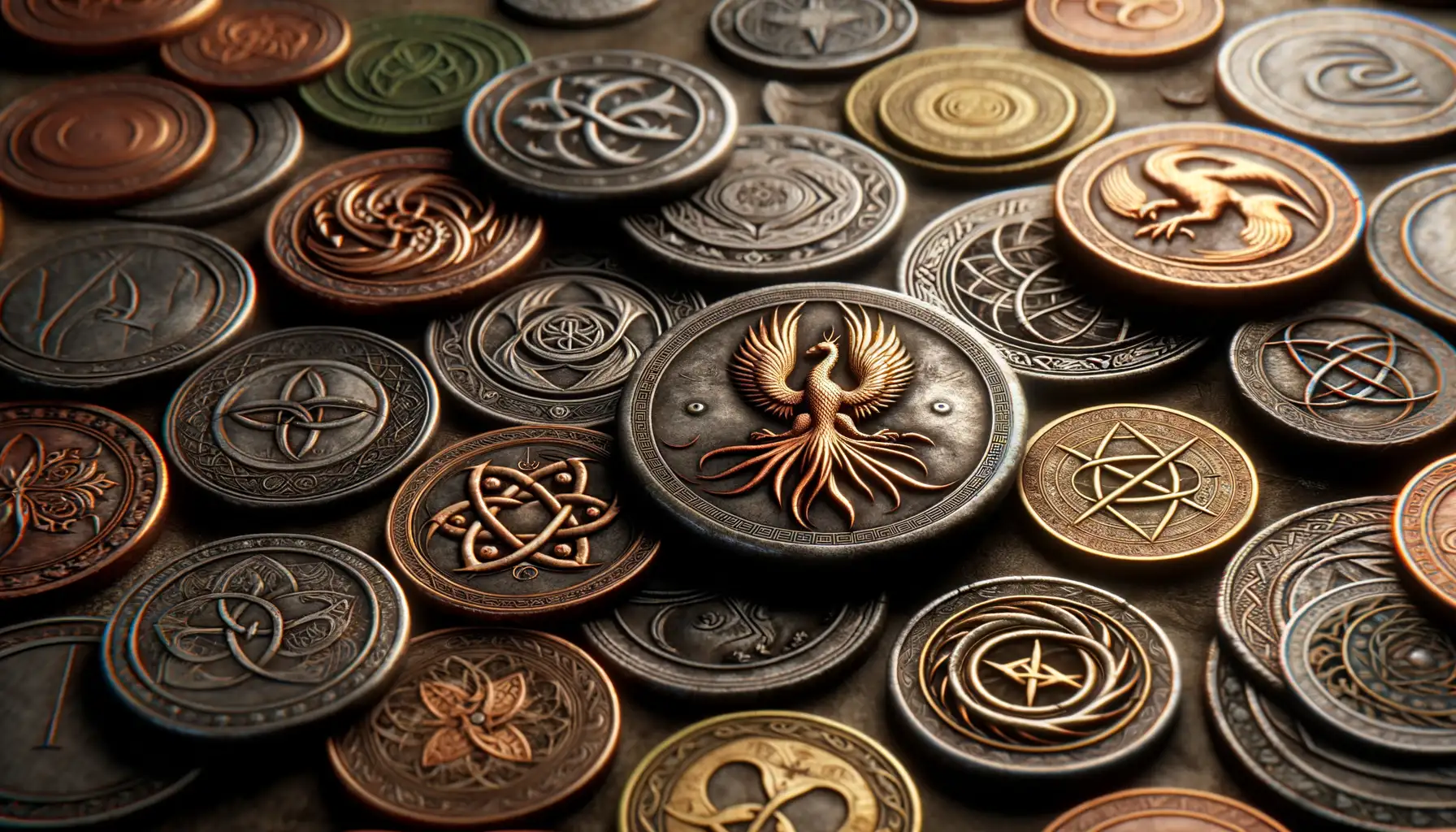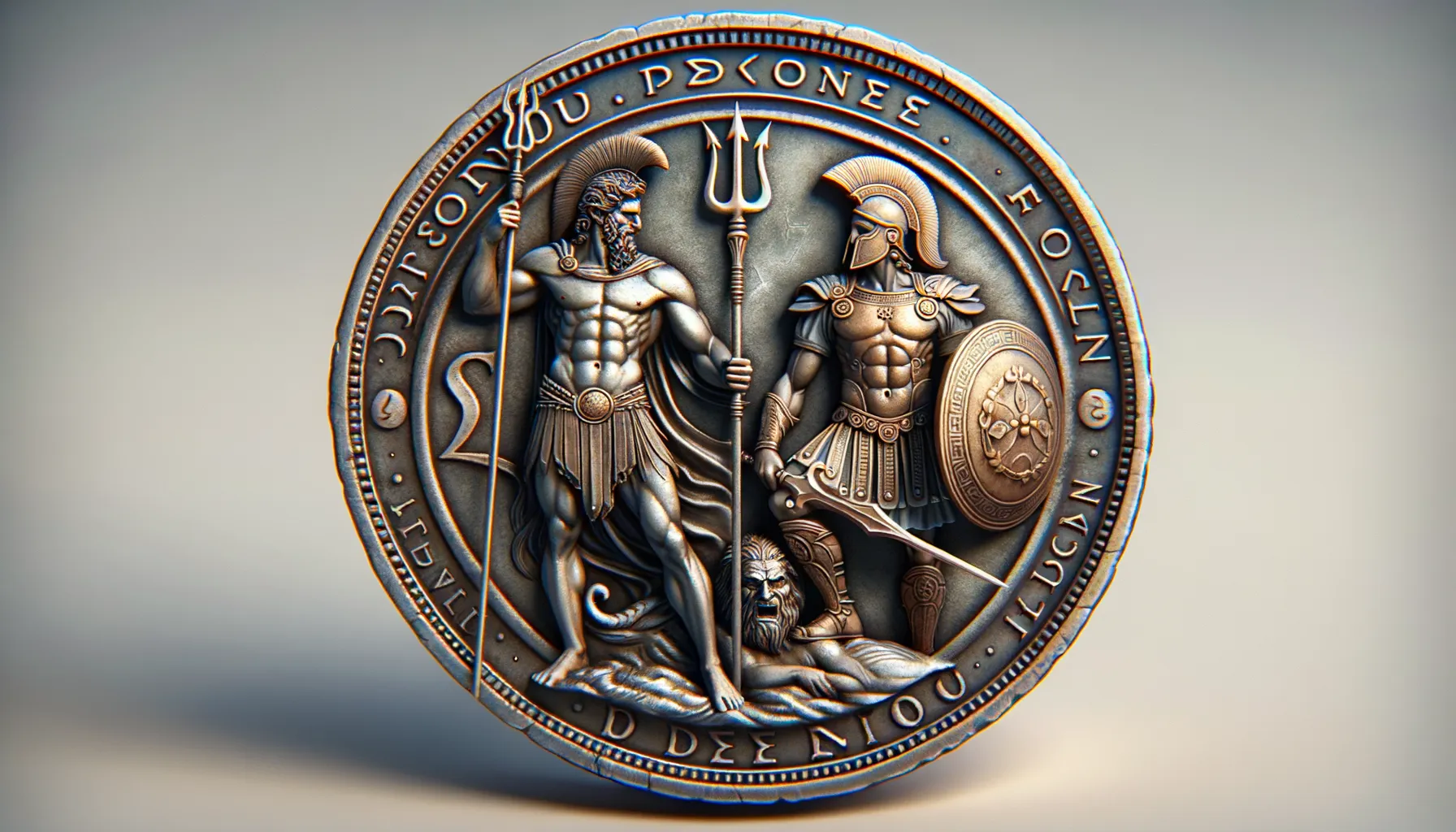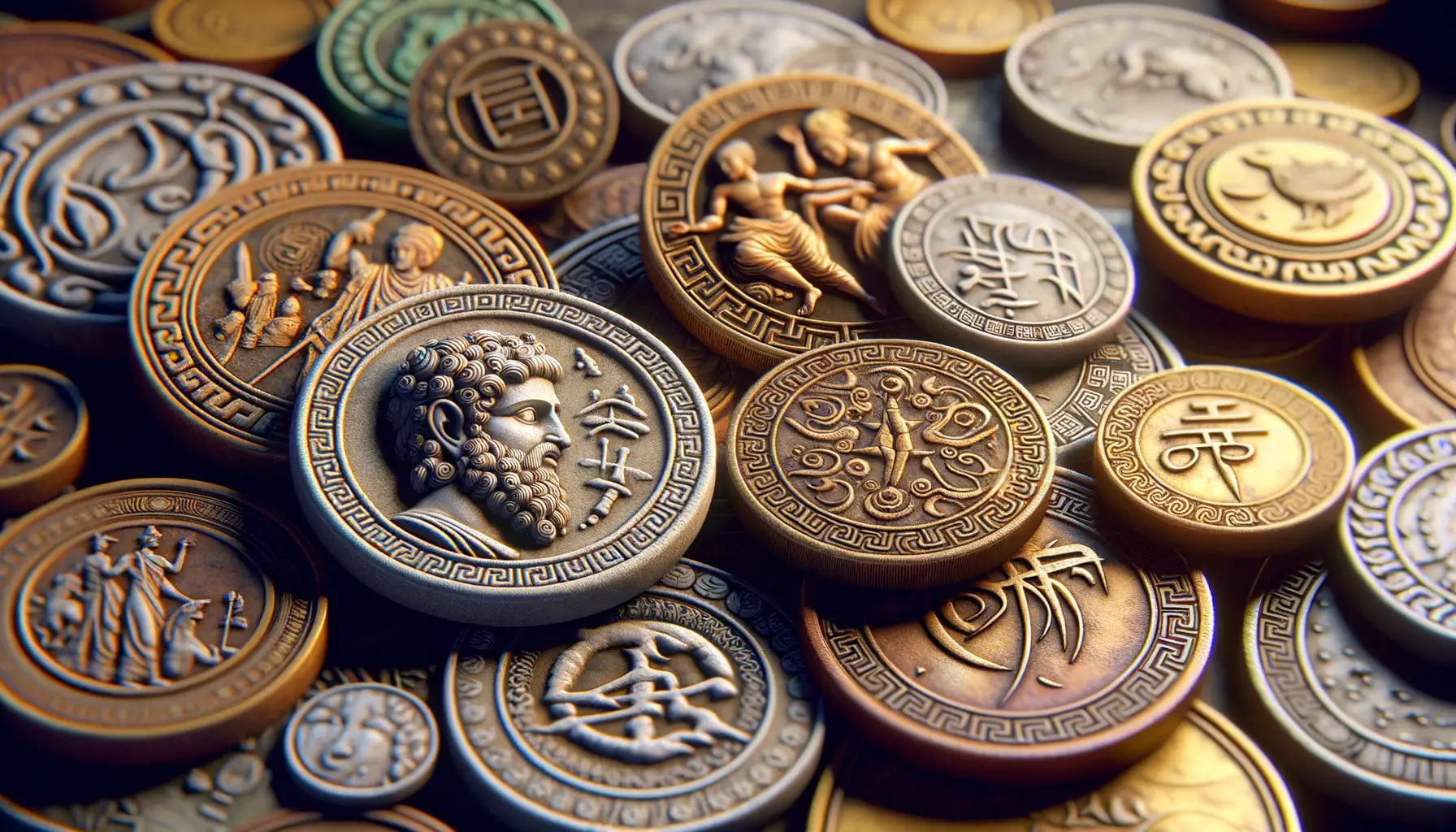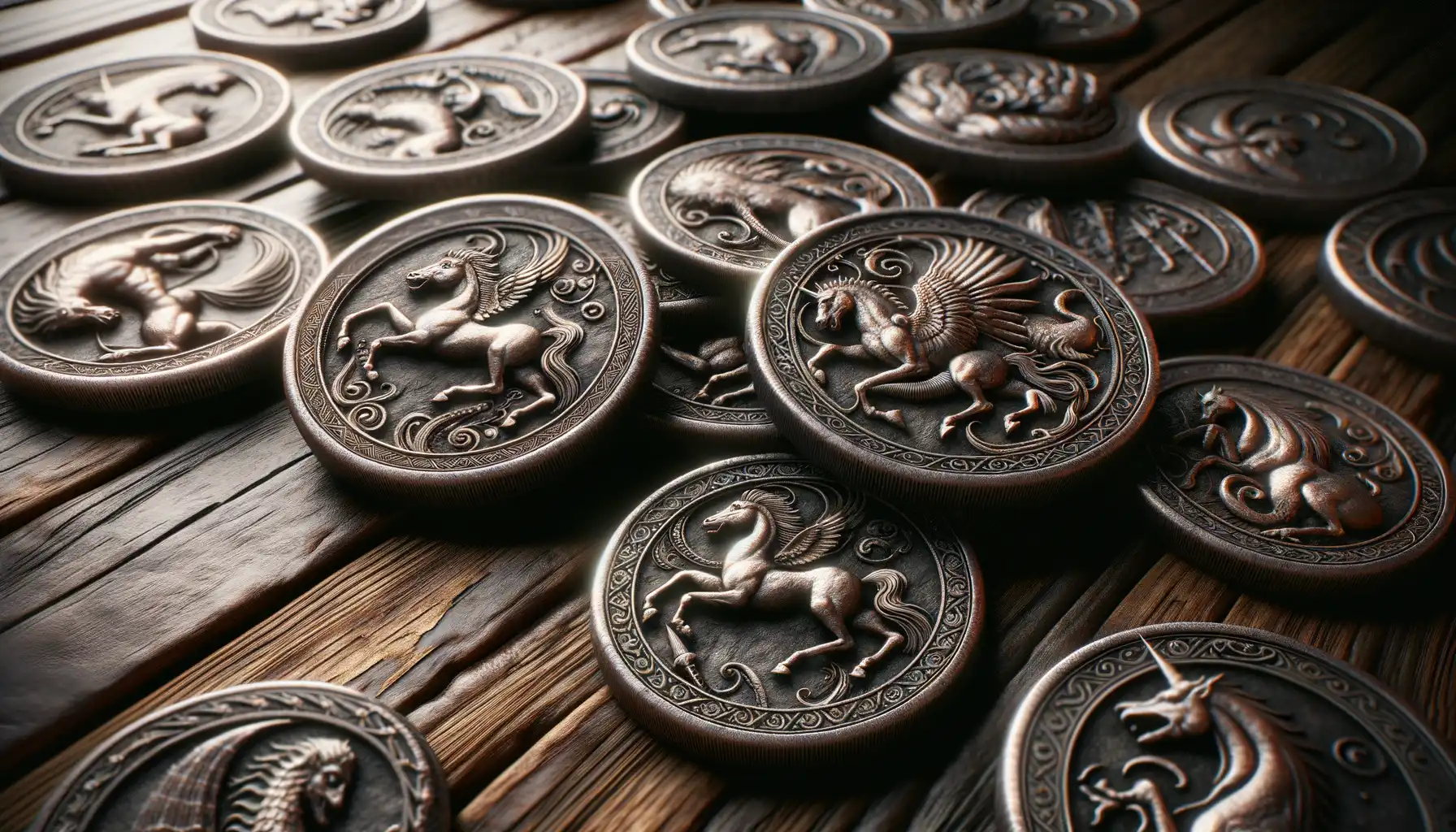Introduction to Coins in Ancient Mythology
A Glimpse Into the Enchanted World of Ancient Coins
Picture this: a coin, small and seemingly ordinary, slipping through the fingers of a merchant in the bustling marketplace of Athens or buried deep within a forgotten treasure chest. But wait—coins in ancient mythology were far more than just currency. They were storytellers, charged with magic, power, and divine significance. These weren’t mere tools of trade; they shimmered with the essence of gods, heroes, and cosmic forces.
In Greek myths, for instance, coins didn’t just serve as pocket change. They acted as tokens of passage, such as the infamous obol placed in a deceased’s mouth to pay Charon, the ferryman who guided souls across the river Styx. Without it? One risked being stranded between life and the underworld. What a haunting thought!
- Some coins bore the faces of mighty deities—symbols of divine protection.
- Others commemorated epic battles or legendary heroes, ensuring their names echoed through eternity.
- A few, remarkably, were believed to carry blessings or even mischievous curses. Imagine carrying both wealth and peril in your palm!
Coins from ancient times whisper tales of adventures and spiritual beliefs. They shimmer like pieces of a puzzle, unlocking the secrets of bygone worlds.
Symbolic Significance of Coins in Myths

The Magic Hidden in Every Coin
Coins in myths are no ordinary trinkets. They shimmer with stories, each one charged with a weight heavier than gold—destiny, power, even life and death. Think of the ancient Greek myth of Charon, the ferryman of the underworld. A single coin placed under the tongue of the deceased wasn’t just payment; it was an unspoken promise, granting safe passage to the shadowy realm of Hades. Without it? A soul might wander aimlessly, like a ship lost at sea.
But coins didn’t only usher spirits to their final rest; they also symbolized earthly aspirations. In many tales, they transformed into tokens of divine favor or magical keys unlocking miracles. Whether buried beneath altars or thrown into sacred wells, coins served as silent prayers for protection, love, or abundance.
- Roman myths speak of coins blessed by gods, bringing fortune to those who carried them.
- Norse legends describe coins left as offerings to appease vengeful spirits.
They weren’t just currency—they were the language of the divine, weaving mortals and gods together in an eternal conversation. Can you imagine holding such a talisman in your palm?
Coins as Depictions of Deities and Heroes

Portraits of Power: Gods and Heroes Struck in Metal
Imagine holding a piece of the divine in your hand. That’s exactly how ancient people must have felt when gazing at coins bearing the faces of their gods and heroes. These weren’t just pieces of metal—they were tangible connections to myths larger than life.
Take, for instance, the stunning silver drachmas of ancient Greece. The face of Athena, goddess of wisdom and war, stares back at you with piercing eyes, her helmet adorned with intricate designs. On the reverse? An owl, her sacred symbol, reminding everyone of her omnipresent intellect. Coins like these weren’t merely currency; they were stories, whispered by myth into the hands of merchants and soldiers alike.
- Alexander the Great: His likeness on coins was crafted to resemble Heracles, tying his legacy to the mighty demigod.
- Julius Caesar: His currency boldly displayed his own portrait—a daring, god-like statement at the time.
These coins didn’t just depict legends—they reinforced belief. Carrying a coin of Apollo or Zeus wasn’t simply about transactions. It was a daily invocation of strength, protection, and identity, wrapped in the glint of gold or silver.
Cultural and Religious Influence of Coins

Coins as Mirrors of Belief and Culture
In the ancient world, coins were far more than just cold, lifeless bits of metal. They were storytellers, reflecting the soul of a civilization. Imagine holding an ancient coin in your hand—it’s like gripping a tiny piece of history that whispers tales of gods, rituals, and human ambition. These coins were imprinted with the values and beliefs of their time, connecting the tangible to the divine.
Take, for instance, those etched with the image of Athena, the goddess of wisdom. For the Greeks, exchanging such a coin wasn’t just commerce—it was participation in a shared cultural identity where Athena’s protection traveled with every transaction. Similarly, Roman coins often bore symbols of Jupiter or Mars, imbuing these objects with a sacred charge that extended beyond mere currency.
It’s incredible how something so small carried worlds of meaning. Coins became sacred messengers, bridging the heavens and the humdrum markets of daily life.
Currency as Tokens of Ritual
Believe it or not, coins didn’t always end up in someone’s pocket. Often, they had lives outside of trade, anchoring themselves in the spiritual fabric of society. Picture this: a traveler tossing a coin into a sacred spring to appease the spirits of water, praying for safe passage. Or entire hoards of coins buried as offerings to ensure a plentiful harvest or protection from plagues. These weren’t careless acts. Coins served as humble yet powerful tools of devotion.
Even funerary rites saw their use. The myth of Charon, the ferryman of the dead, required a coin for passage over the river Styx. The dead were buried with a single coin placed under their tongue, ensuring their journey across realms. Each culture adopted its own unique practices, but the message remained clear—coins were more than practical. They were spiritual companions, eternal links between gods, humanity, and the dreams that bound them together.
Legacy of Ancient Mythological Coins

Timeless Stories Embedded in Metal
Picture this: a small, weathered coin resting silently in the palm of your hand. Yet within its intricate carvings lies an entire universe—epic battles, divine powers, and the whispers of civilizations long gone. The legacy of ancient mythological coins is not just about currency; it’s about preserving the pulse of a people’s beliefs, their fears, their very identity. These coins carry stories etched in bronze, silver, and gold, like tiny time capsules from antiquity.
Many of these coins immortalized heroes and gods, becoming portable shrines of mythology. Imagine holding a Roman denarius featuring Jupiter, king of the gods, or a Greek drachma that boasts the magnificent Athena in her battle-ready glory. Each detail—the curve of a laurel wreath, a thunderbolt clenched in a divine grip—meant something profound to those who carried them.
- Victory: Coins of Nike, goddess of triumph, often symbolized wartime conquests.
- Protection: Tokens of Hermes, guardian of travelers, were tucked into pockets for safe journeys.
- Wealth: Depictions of Plutus, god of abundance, whispered promises of prosperity.
Every flip of one of these coins was a silent prayer, every exchange a connection to something greater than oneself. Today, their worn surfaces still gleam with the echoes of belief—just imagine the humanity they’ve witnessed.






